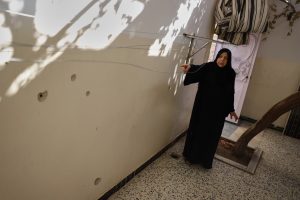Scientists aim to dim sunlight to fight climate change: Report
Ella Greene April 23, 2025 0
Scientists are set to launch experiments designed to dim sunlight to combat climate change. The Telegraph reports that researchers will conduct outdoor tests within weeks, including the brightening of clouds to reflect sunlight using aerosols.
Why are scientists conducting these experiments?
The research is an effort to find new ways to prevent climate change from further warming the planet.
The research follows decades of scientists studying unusually bright clouds above shipping routes. Researchers discovered that pollution from sulfur-burning ships caused the clouds to become more reflective of sunlight, dimming and cooling the environment around them. The experiments will build on these findings.
Who is funding the project?
The United Kingdom’s Advanced Research and Invention Agency or ARIA is reportedly dedicating tens of millions of dollars for the experiments, with more details expected in the weeks ahead.
Professor Mark Symes, the program director for ARIA, told The Telegraph that they will soon announce when experiments will take place.
“We will be announcing who we have given funding to in a few weeks ,and when we do so we will be making clear when any outdoor experiments might be taking place,” Symes said.
Symes stated that one of the crucial pieces absent from current data is real-world physical experimentation, saying computer-generated information can only provide limited insight.
Will the tests be safe?
Researchers promise all experiments will be “safe by design” and said they are “committed to responsible research.”
Scientists said they have stipulations on how long the tests can run and ARIA will not be funding any experiments that would release toxic chemicals into the air.
Critics, however, warn artificial control of the environment may lead to unintended and harmful consequences and distract from the true mission in fighting climate change, reducing greenhouse gases.
How are researchers responding?
Scientists contend that the experiments are needed because emissions are not dropping fast enough, and said action is needed now to prevent further damage from a warming climate.
The World Meteorological Organization reported that global greenhouse gas emissions reached a record high in 2024, and said there is “no sign” the world has reached a peak.
“Until we reach net zero CO2 emissions globally, world temperatures will continue to rise and cause increasingly severe impacts – as witnessed in 2024 and recent years,” the organization warned.
How will scientists test the theory?
Researchers are reportedly focusing on tests involving sunlight reflection models that involve the release of tiny particles into the air to reflect sunlight.
Scientists are also looking into another climate change prevention method called marine cloud brightening. This is a process where ships spray sea-salt particles into the atmosphere to increase the reflective qualities of low-hanging clouds. University of Exeter professor Jim Haywood, who is an expert in atmospheric studies, told The Telegraph that this could help reflect sunlight.
“If you inject small particles into clouds you can brighten them, hence reflecting more sunlight back into space,” Haywood said.
Other methods may include seeding some high-altitude clouds to cool the Earth by allowing heat to escape into space. Scientists say these clouds currently trap heat.
Researchers said if these tests are successful, these methods to dim sunlight could be implemented within the next decade.
Related Stories
Ella Rae Greene, Editor In Chief
Ella Greene
Ella and the staff at Clear Media Project (CMP) curate these articles.
Unless otherwise noted CMP does not write these articles.
The views, thoughts, and opinions expressed in the articles published on this blog belong solely to the original authors and do not necessarily reflect the views of the blog owner. The blog owner does not claim ownership of the content shared by contributors and is not responsible for any inaccuracies, errors, or omissions.
All rights and credits goes to its rightful owners. No Copyright Infringement is intended. If you believe any content infringes on your rights, please contact us for review and potential removal.





